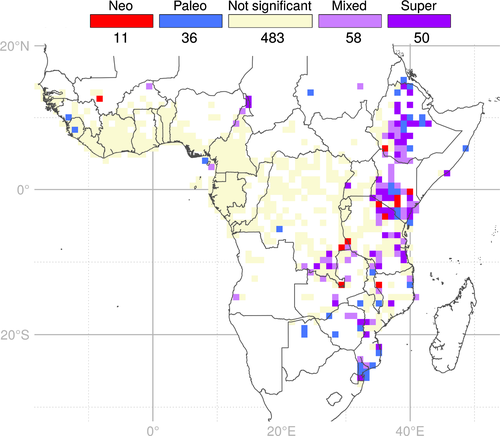[Science news] - Finding important diversification zones for Central African plants
 Plant diversity changes over the millennia. New species evolve, some go extinct, whereas others persist locally or spread wider. Some regions of the world are 'cradles of diversity', where many new species evolve. Others are 'museums of diversity' – refugia where species survived millennia of environmental change and can still be found today. Both these types of place are important for biodiversity conservation. However, to protect these special areas, we first need to be able to identify them.
Plant diversity changes over the millennia. New species evolve, some go extinct, whereas others persist locally or spread wider. Some regions of the world are 'cradles of diversity', where many new species evolve. Others are 'museums of diversity' – refugia where species survived millennia of environmental change and can still be found today. Both these types of place are important for biodiversity conservation. However, to protect these special areas, we first need to be able to identify them.
Tropical Africa is one of the most biodiverse regions on Earth. In a joint study together with scientists from Belgium, France, Cameroon, the UK and the Netherlands, we examined distribution data on young (neo-) and old (paleo-) endemic African plants of 1719 genera, combined with a newly generated time-calibrated mega-phylogeny.
Our study identified multiple regions as cradles and museums of plant diversity in Africa. The results show that mountainous areas are centres of both newly originated species and old remnants of past plant lineages. Interestingly the lowland rainforest of central Africa is characterised by old species that have a widespread distribution. The study demonstrated the important role of African mountains as they have acted both as cradles and museums and therefore had a large impact on Africa’s biodiversity.
Relevant publications :
Dagallier, L.P.M., Janssens, S.B., Dauby, G., Blach‐Overgaard, A., Mackinder, B.A., Droissart, V., Svenning, J.C., Sosef, M.S., Stévart, T., Harris, D.J. and Sonké, B., 2019. Cradles and museums of generic plant diversity across tropical Africa. New Phytologist : https://doi.org/10.1111/nph.16293



